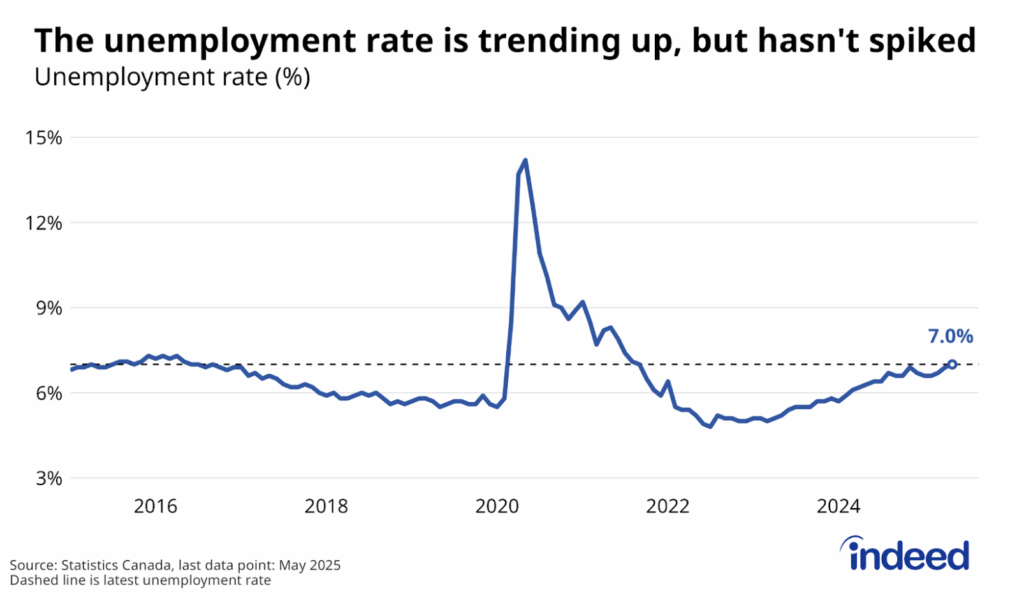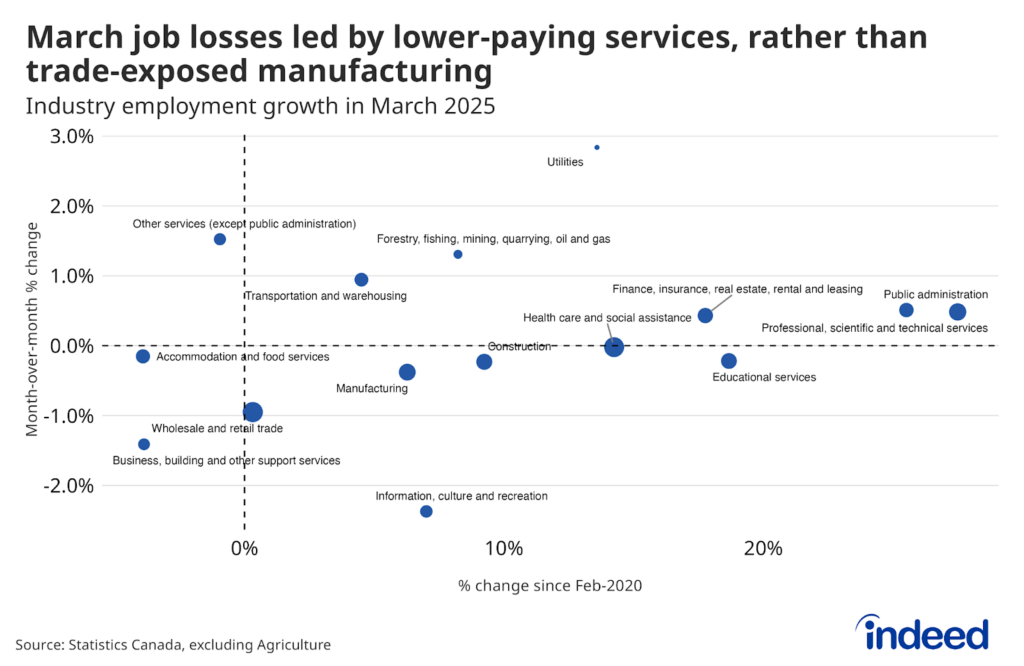Key Points
- The share of Canadians actively looking for work edged down in January, from 34% to 31%, led by declines in urgent search among both employed and unemployed job seekers.
- The arrival of the Omicron wave impacted job search in different ways, reducing the urgency of job search among some unemployed Canadians, while also serving as motivation for some currently employed job seekers to find new, less risky work.
- Job seeker confidence in finding new work quickly fell among employed respondents after a strong December, though the source of the decline is unclear, as the share of unemployed job seekers at least somewhat confident they could land a new job within the next month held steady.
Canadian job search activity edged down in January according to the latest Indeed Job Search Survey. Overall, 31% of adults aged 18 to 64 surveyed between January 10-26 reported they were actively looking for work, a statistically significant decrease from the 34% on the job hunt in December.
Search activity ticked down both among those working and not, though the decline was only statistically significant among those already employed, partially due to their larger sample size. The share of employed survey respondents on the job hunt eased from 31% to 28%, while search activity ticked down from 42% to 40% among those not already working. Both declines were led by fewer respondents urgently searching for work, while non-urgent job search rose slightly.
The circumstances of the pandemic in January likely contributed to the shift to less urgent job search among some job seekers. For instance, 26% of unemployed job seekers who weren’t searching urgently gave worries about COVID-19 as a reason their search wasn’t urgent, up by a statistically significant margin from 20% in December, which itself was the highest share since July. As a result, nearly half of unemployed job seekers indicated their job search was not urgent in January, the highest proportion since the wind-down of the Canada Recovery Benefit in October.
Conversely, for some employed job seekers, the upswing in the pandemic likely increased motivation for some to look for a new job, as they sought less risky positions. Among those actively searching while working, 9.9% mentioned looking for a new position with fewer COVID-19 risks as a reason they were on the job hunt, a statistically significant increase from 6.6% in December.
Employed job seekers were less confident they can find work quickly
After rising steadily during the final months of 2021, the share of employed job seekers who indicated they were at least somewhat confident they could find a new job within the next month fell back in January, from 59% to 50%, close to where it stood in October. While the arrival of the Omicron wave is the most obvious shift that could help explain the shift, the drop in confidence was especially large among those with undergraduate degrees, whose job market prospects probably weren’t as impacted by the worsening pandemic. Meanwhile, we didn’t see the same deterioration in perceptions among unemployed job seekers. The share of those out of work and searching who were relatively confident in finding new work quickly remained stable, albeit at a lower 43%.
Overall, the outlook is bright for both groups heading further into 2022. With Canadian job postings on Indeed through mid-February showing ongoing momentum, we could see confidence among both groups improve, particularly once the latest wave of COVID-19 cases passes, as the labour market situation increasingly tilts in favour of job seekers.
Methodology
This blog post is based on separate online surveys of 4,000 Canadian adults ages 18-64 conducted on July 15-20, August 9-23, September 13-29, October 11-20, November 8-25, December 6-29, and January 10-26. The survey was conducted among various general population survey panel audiences. Indeed awareness, use, or otherwise was not a requirement for participation. There was no mention of Indeed or any other job sites in the survey and respondents were not aware that the survey was sponsored by Indeed.
Weights were applied to match respondent distributions across age, educational attainment, and time spent in Canada with the Labour Force Survey public-use microfile data from January 2021 through June 2021. Due to a slight change in methodology in calculating population weights, numbers may not exactly match prior reports.






